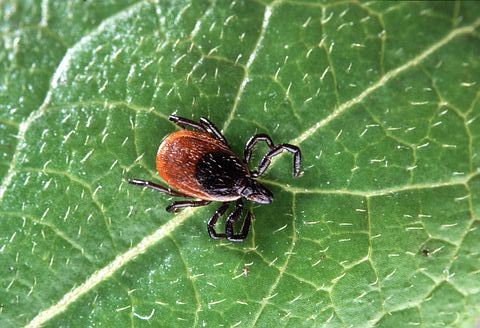 Using our pets to track ticks and the prevalence of Lyme disease is the focus of a new online reporting system aimed at understanding how the disease-carrying insects are spreading across Ontario.
Using our pets to track ticks and the prevalence of Lyme disease is the focus of a new online reporting system aimed at understanding how the disease-carrying insects are spreading across Ontario.
The province has become a hotbed for the blacklegged tick known to carry B. burgdorferi, the bacterium that causes Lyme disease.
“Right now Lyme disease and ticks are mostly found along the north shore of Lake Ontario, but this area is expanding,” said U of G pathobiology professor Scott Weese, who developed the online tool. “If we can track where the ticks are, then we can get a better handle on where Lyme disease risk is because where the ticks move, the disease moves.”
The Pet Tick Tracker gathers information from pet owners who have found ticks on their pets. On the site, pet owners can provide details such as where the insects were likely picked up, as well as the type of tick and how many were found.
The system analyzes the information and updates a map showing the prevalence of ticks in Ontario that is shared with public health officials.
Launched a few weeks ago, the site has already had more than 1,500 reports.
Besides mapping the ticks, the online tool is helping U of G researchers predict the insects’ movement and alerting them to the introduction of other tick species in the province.
“It’s an early warning system,” said Weese. “It will help us learn what type of ticks we need to pay attention to.”
While some tick species are common in Ontario, rare ticks carried here by migrating birds have also been found, added Weese.
“There is a concern that some of these rare tick species might establish themselves and their diseases in the province. This online tracking system can identify areas that might need to be studied to determine whether a rare tick species has actually established a foothold here.”
Field researchers are also using the online reports to better understand the ecology of Lyme disease and elements such as temperature, precipitation, elevation, vegetation and wildlife that help it thrive.
Pets, particularly dogs, are an effective way of monitoring the location of ticks, said Weese.
“If an animal gets exposed, then a person will get exposed because the same ticks that jump on animals will jump on us. However, dogs get more exposure than their human owners because they are lower to the ground and tend to explore more and go places their owner might not.”

Although dogs are more likely to be exposed to ticks and to B. burgdorferi than their human owners, canines seem less likely to suffer from Lyme disease, Weese added.
“Dogs may be able to fight off the disease better than humans.”
Along with researcher Michelle Evason, Weese is launching the Canadian K9 Lifetime Lyme Study, intended to improve prevention, diagnosis and treatment of Lyme disease. Researchers will monitor some 300 dogs from across the country to learn more about risk factors for Lyme disease as well as age of diagnosis, symptoms and response to treatment.
“The more we can understand about how we get exposed to ticks and Lyme disease, the more we can do to prevent it from happening.”
Contact:
Prof. Scott Weese
jsweese@ovc.uoguelph.ca